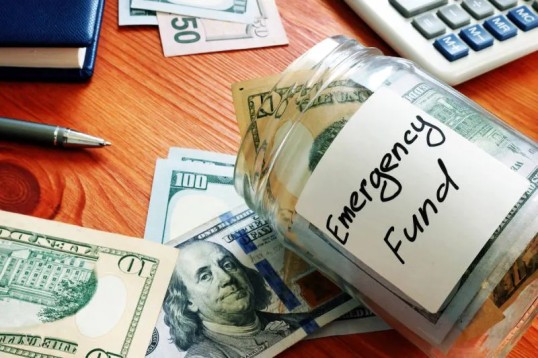An emergency fund is a dedicated savings account for unforeseen expenses and emergencies. It provides a financial cushion to cover unexpected costs without resorting to credit cards or loans or depleting long-term savings accounts such as retirement funds. The primary purpose of an emergency fund is to provide financial stability during times of crisis, ensuring that you can maintain your basic needs and lifestyle without plunging into debt.
Safety and Security in Times of Need
An emergency fund offers invaluable safety and security when facing unexpected financial challenges. Some of the benefits include:
- Preventing Debt. With an adequate emergency fund, you won't have to rely on credit cards or loans to cover unforeseen expenses. This can help you avoid accumulating high-interest debt that can be difficult to repay.
- Reduces Stress. Knowing that you have a financial cushion in place provides peace of mind. It allows you to face emergencies with confidence, reducing stress and anxiety.
- Protects Financial Goals. An emergency fund protects your long-term financial goals by ensuring you won't have to dip into investments or savings reserved for other purposes, such as buying a home.
- Promotes Financial Independence. Relying on your savings rather than external sources of funds fosters financial independence and self-reliance.
How Long Does It Take to Build an Emergency Fund?
The time it takes to build an emergency fund depends on your income, expenses, and savings rate. If you can save a significant portion of your monthly income, you can build your fund relatively quickly.
For example, if your goal is to save $10,800 (equivalent to three months of living expenses for the average person in the United States) and you can save $900 per month, it would take you one year to reach your goal.
However, it may take longer for those with tighter budgets or more expenses. The key is consistency. As long as you progress toward your goal, you build financial security.
Tactics for Building an Emergency Fund
Building an emergency fund requires a strategic approach and disciplined saving habits. Here are some tactics to help you get started.
Set a Clear Goal
Determine how much money you want to have in your emergency fund. Financial experts often recommend saving at least three to six months of living expenses. However, your circumstances may warrant a larger or smaller fund. Remember that it is better to have a small emergency fund over none at all.
Create a Budget
Track your spending to understand your fixed monthly expenses, such as rent, and discretionary costs, such as eating out or shopping. Identify areas where you can cut back or allocate more funds toward savings. Create a budget that prioritizes saving for emergencies.
Automate Savings
Set up automatic transfers from your checking account to a separate savings account designated for emergencies. Treating this savings account as a non-negotiable monthly expense will help you consistently save over time. Define what constitutes an emergency and only withdraw from this account in those situations.
Start Small
Don't be discouraged if you can't save much initially. Even small contributions add up over time. The key is to get into the habit of saving regularly.
Cut Unnecessary Expenses
Periodically review your expenses and look for ways to reduce discretionary spending. This can free up additional funds for your emergency fund. This short-term sacrifice isn't easy, but it is worth it for the long-term security.


